Urena lobata
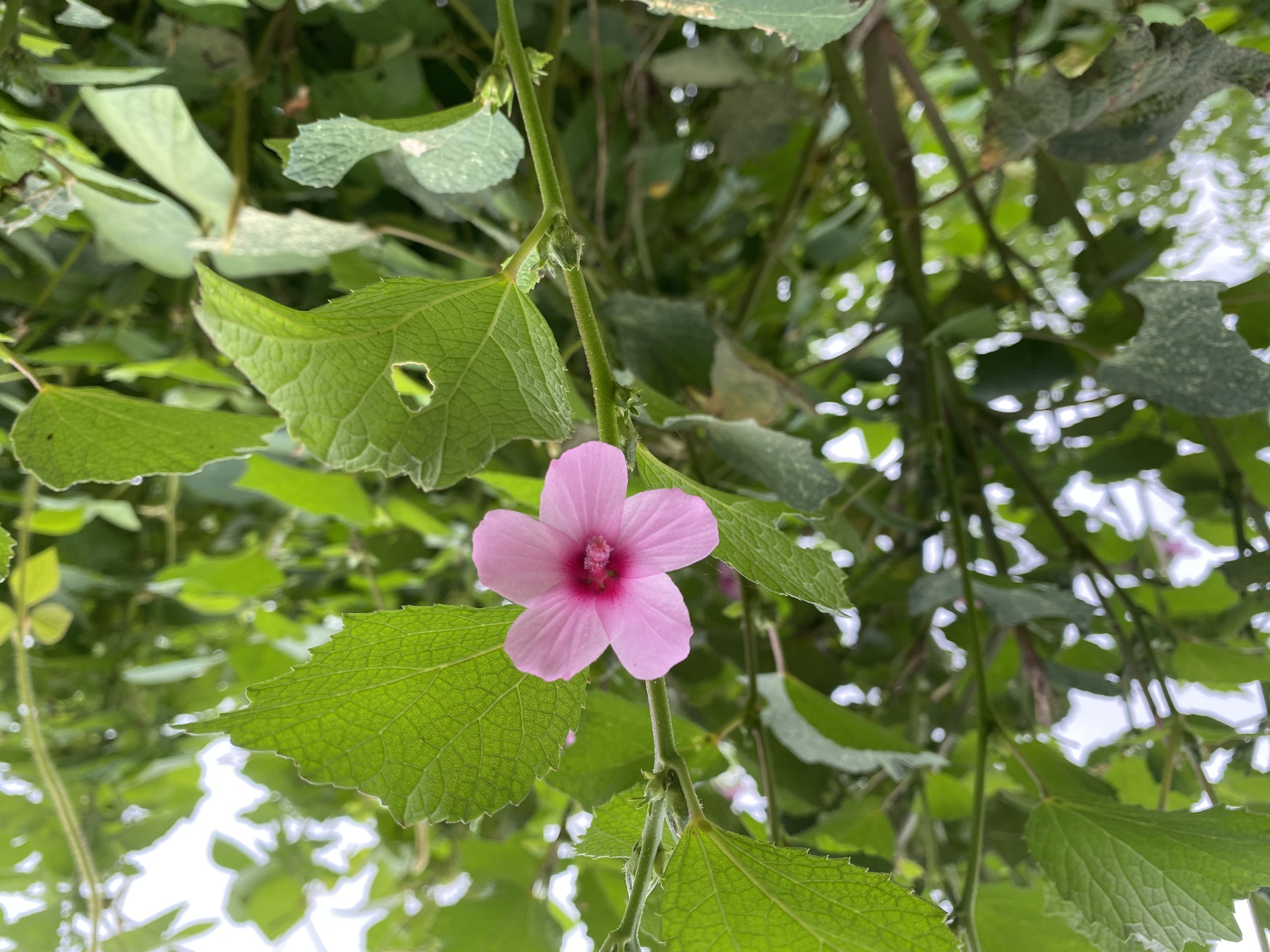
Family: Malvaceae
other names: aramina, bachita(hindi), banokra(bengali), bur-mallow, caesarweed, hibiscus bur, pobibaong(bengali)
U. lobata is annual in subtropic zones and perennial in tropic zones. It prefers hot, humid climates with direct sunlight and rich, well-drained soil. It is native to a lot of countries, including mine, Nigeria, but extinct in Seychelles. It has been introduced to countries such as the USA and Brazil, and s considered an invasive specie in the American state of Florida.
It is used medicinally, as a diuretic and to treat lumbago and rheumatism, or as a contraceptive. It is also used as a fibre to make clothes or bags, hence one of its other names, Congo jute.
I often search frantically for the first signs of Urena lobata on my walks. This not-so-clear picture put here was a chance meeting. I used to see them in bountiful clusters but the season passed and not again since then.
The hibiscus bur is in season right now (Late September, 2024) and these blooms are bigger and richer in colour than those of last year's. I have changed the picture to reflect. They have also appeared in new places, against a wire fence, and amongst overgrown weeds near a plot of farmland. I am grateful to see my friends' faces once more.
Murraya paniculata
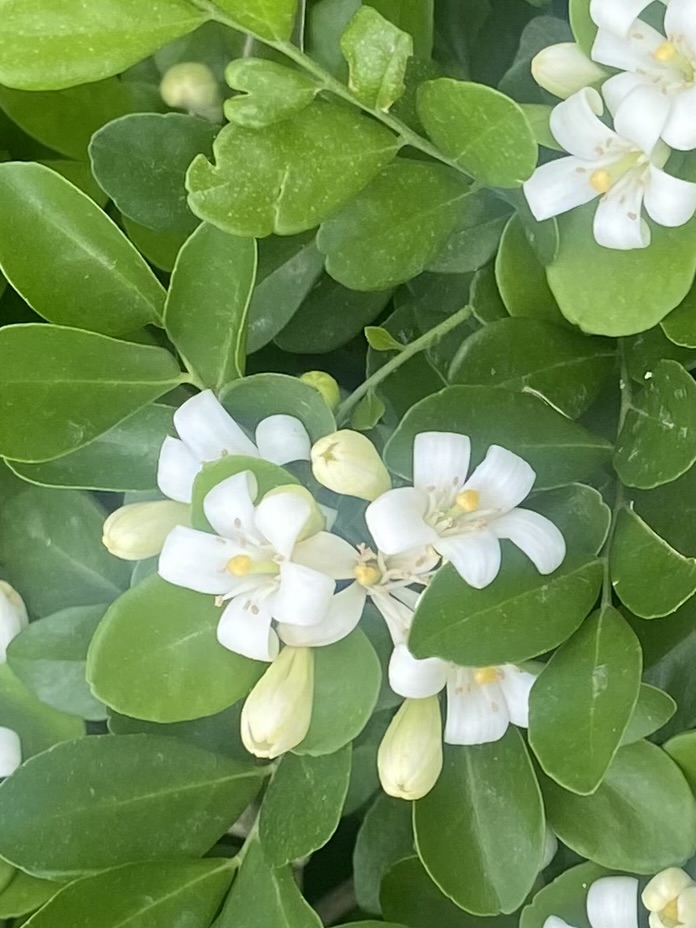
Family: Rutaceae
popular names are: orange jasmine, orange jessamine, or mock orange
This flower is known for its strong, sweet, citrus-y scent, hence its name. It is grown in my estate and I make it a point to walk around, just so I can perceive it. The Chinese called it "the scent that can be smelled from a thousand metres away." The flower is used to make essential oils and herbal tea (I did not know this before, and I am currently running to try). Be warned, most orange jasmine tea posts online are made from tea bags, or already prepared loose tea leaves, not fresh flowers.
The plant grows in a shrub or a small tree, and may grow as tall as 6 metres. It thrives in tropical or sub-tropical regions. It requires a well-drained soil, as waterclogged soil would harm it. Often times, I witness the flowers in my estate wilt after a bout of heavy rain. I'm assuming that where they are planted does not have proper drainage, but I am not very learned in such a thing.
The orange jasmine plant seems very important in Chinese culture, here is a poem of the plant:
Orange Jessamine
By Xi Murong
The Stream yearns for the Sea,
Yet the Wave longs for the Land.
Once in front of the hedge with white blossoms,
Readily we waved goodbye.
After twenty years of ups and downs,
Our souls come back together every night.
When the breeze drifts in,
We are dissolved into fragrance in every corner of the garden.Lantana camara
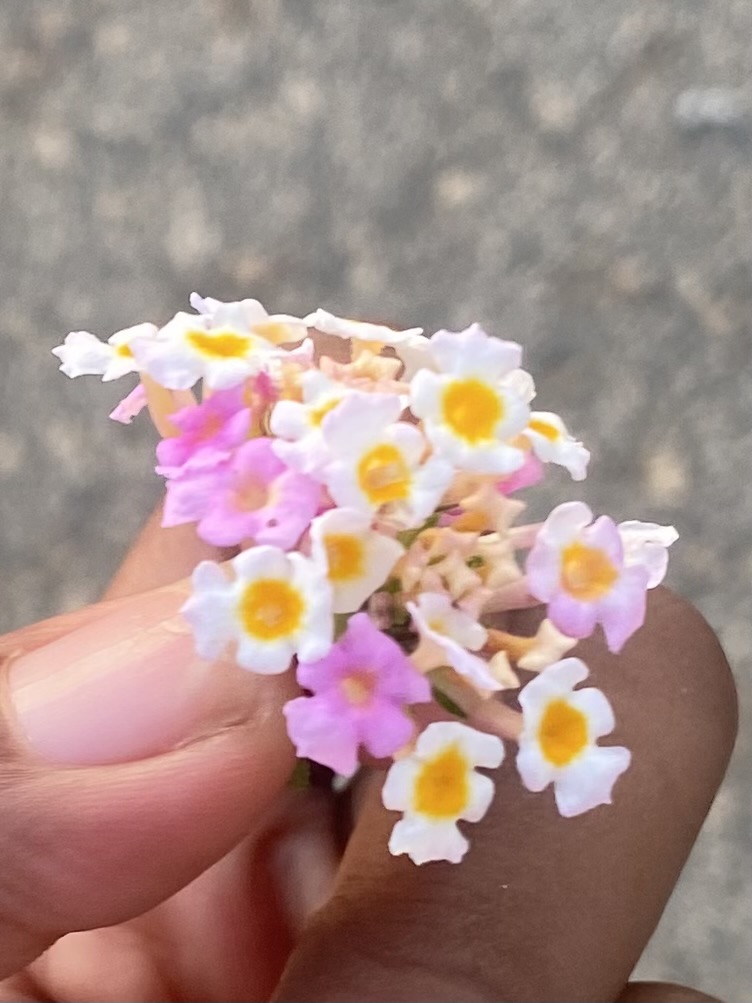
Family: Verbenaceae
other names: wild sage, red sage, tickberry
The L. camara flower is a rather interesting one, very cunning. It exists in most of the world as an invasive species. It began its journey when it was transported to Europe from the Americas and sold as an ornamental plant. It can be found in supposedly 60 tropical and sub-tropical zones, Nigeria being one of them. The plant ensures its survival by being resilient to many weather conditions, by having its seeds spread from birds eating its fruit, by avoiding destruction by being toxic to some animals and by releasing toxic chemicals to destroy competing plants.
The flowers can be seen in many different colours and these colours indicate whether pollination has occured. The flowers turn from yellow to pink, red or orange, usually. L. camara is rather attractive and it possesses anti-bacterial, anti-inflammatory and many apparent medicinal properties, these make it even more desirable for growing to those who may not be aware of its status as an invasive species. Granted, I was not aware of these characteristics myself when I picked some flowers (as photographed here) and made tea with them and some orange jasmine flowers (lol).
-
Tabernaemontana divaricata
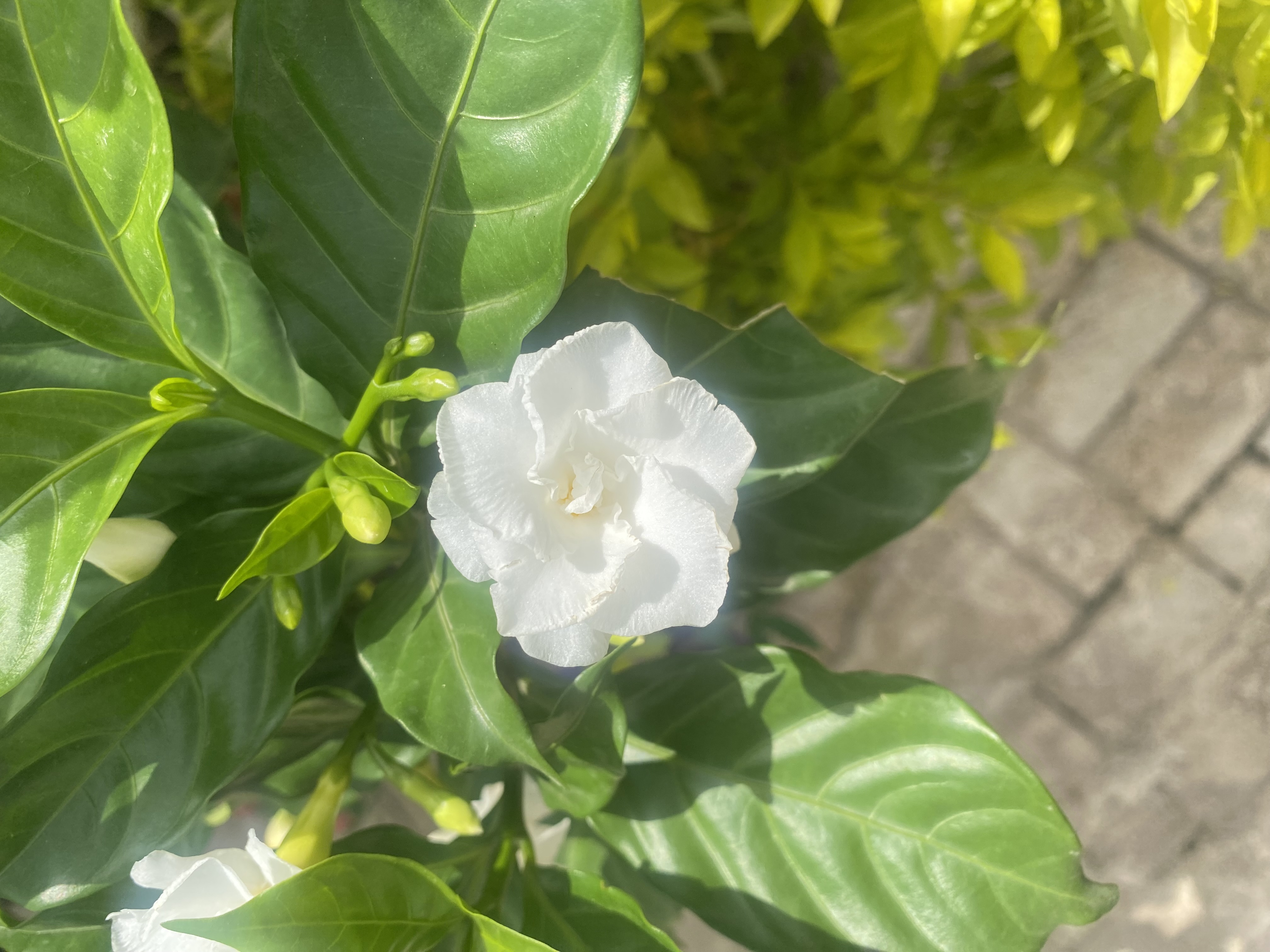
Family: Apocynacaea
Name: crape/cape/crepe jasmine, pinwheel flower, moonbeam, east India rosebay, chandini (hindi), ananta/tagar (konkani/marathi), nandi battallu (kananda), sagar (gujarati), nandivskrah (sanskrit)
The crape jasmine is native to India and it has been cultivated throughout Asia. It is an evergreen shrub. used primarily for ornamental reasons. Its white flowers are what make it so popular, but I believe its glossy green foliage adds so much aesthetic value to the plant. Between the delicate petals and the reflective surface of the leaves, the plant is a pleasure to behold.
When the stem of the plant is broken, it releases a milk latex, earning it the name "milk flower" of "milkweed." This secretion is typical of plants in the Apocynaceae family. For years and years, T. divaricata, along with other plants under the Tabernaemontana genus, have been used in traditional and folk medicine for the treatment of illnesses. These plants possess antimicrobial, antioxidant, anti-inflammatory, anticholinesterase, antineurodegenerative, anticancer, antidiabetic, antivenom, larvicidal, antihypertensive, wound healing, analgesic, and many other activities. In ancient Indian and Ayurdevic medicine, juice from the flower is mixed with oil and applied on the skin to treat inflammation. It was apparently used mostly on the eyes to treat Ophthalmia, inflammation of the eyes.
The plant comes alive in the night. Its name "moonbeam" comes from the increased beauty of the flowers in the moonlight. It is said that the double-flowered form of the flower releases its scent at night, I wish I could experience it.
-
Ipomoea asarifolia
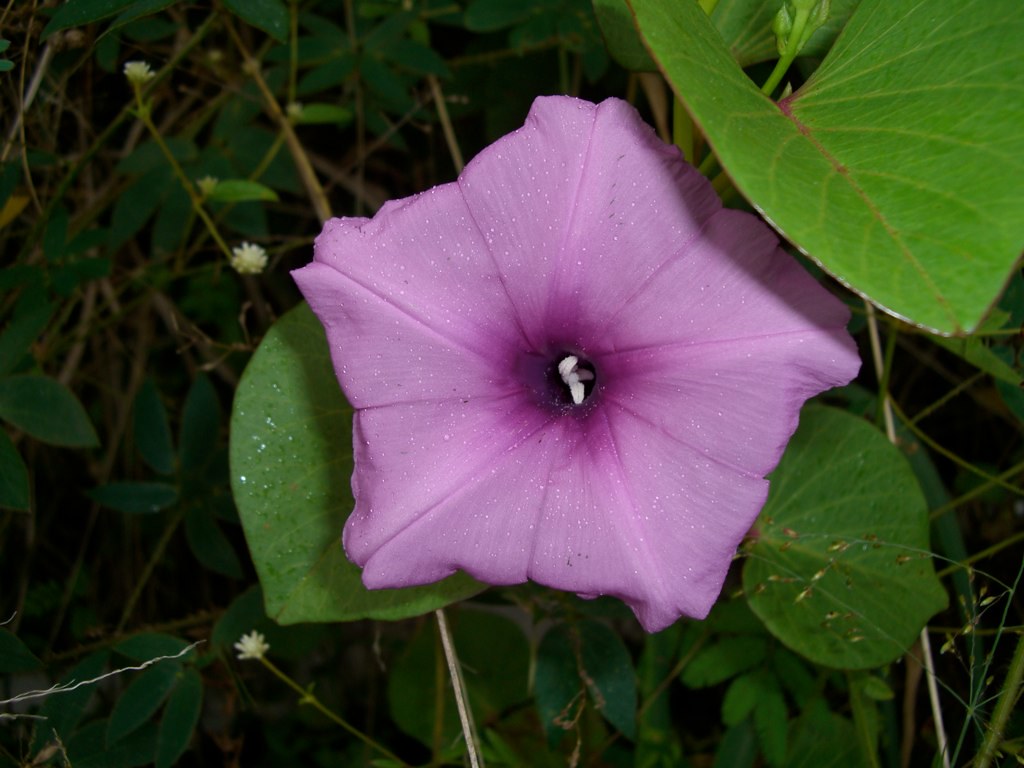
Family: Convolvulacaea
Name: Ginger-leaf Morning Glory
The ginger-leaf morning glory is a perennial vine with twinning, tangling stems and heart shaped leaves. I see this flower almost everywhere in Abuja and, sometimes, in Rivers State. It sprawls and crawls far and wide along roads and within bushy areas.
It is native to tropical and subtropical regions, thus, it is a sun-loving plant that flourishes in warm climates.
The blossoms open early in the morning and close by midday, earning the name "Morning Glory". I have observed that the blossoms around me begin to open by 6am and, by 8am, almost, if not all, flowers are open.
The beautiful flowers attract pollinators, acting as an ecological anchor. These blooms may come in purple, pink and white. The plant also produces capsules containing seeds that are dispersed by wind and water. Around my house, there are many clusters, not far apart, that go on for many kilometres.